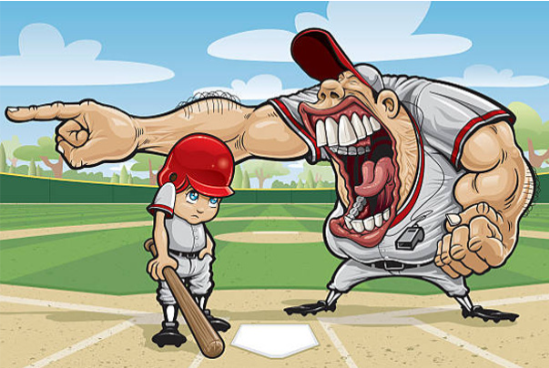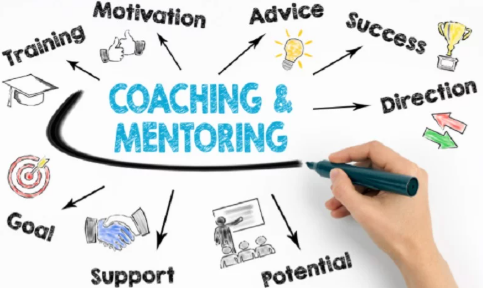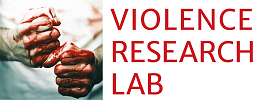The abuse in the coach-athlete relationship
Participation in organized sports activities can have multiple positive effects on the physical health and psychosocial well-being of athletes of different age categories (Baker et al., 2010; Bryant et al., 2020; Eime et al., 2013; Findlay & Coplan, 2008; Oja et al., 2015; Pedišić et al., 2023; Snyder et al., 2010; Vella et al., 2014). However, participation in sports activities in which the personal well-being of the athlete is subordinated to sporting success and/or in sports activities characterized by a high level of violence can significantly impair the physical and mental health of the athlete (Mountjoy et al., 2016; Parent & Fortier, 2018; Greblo Jurakić et al., 2022).

Further, interpersonal violence, such as sexual harassment, physical abuse, and verbal abuse, is also one of the negative aspects of sports activities, which have a seriously negative impact on the physical and psychological health of young athletes and lead to impaired performance, cessation of sports activities, and psychosomatic illnesses (Mountjoy et al., 2016). The coach-athlete relationship is a focal point because the two have an asymmetrical power relationship (Vertommen et al., 2016). The International Olympic Committee Consensus Statement documented that “all athletes have a right to engage in “safe sport”: an athletic environment that is respectful, equitable, and free from all forms of non-accidental violence to athletes” (Mountjoy et al., 2016). Compared to sexual harassment, far less attention has been paid to verbal and physical abuse to young athletes (Vertommen et al., 2017). However, verbal abuse remains a common aspect of coaching, and physical abuse is a negative aspect of coaching in sports (Swigonski et al., 2014; Vertommen et al., 2016).
Main findings of the article (study) “The Characteristics of Coaches that Verbally or Physically Abuse Young Athletes” has shown that the coaches who commit verbal abuse are characterized by lower educational attainment, experiences of verbal abuse by their former coaches, acceptability for verbal or physical abuse, and dissatisfaction with athletes’ attitude towards sports activities. Further, coaches who commit physical abuse are characterized by having experienced physical abuse by their former coaches, acceptability for verbal or physical abuse, and longer coaching experience. Breaking these negative chains of verbal and physical abuse is necessary to prevent and eradicate the abuse of young athletes.
In the USA, nearly 1 in 5 college athletes reports some form of abusive supervision – defined as sustained hostile verbal and non-verbal behaviors – by their coaches, reveals an analysis of survey responses, involving National Collegiate Athletic Association (NCAA) athletes, and published online in the British Journal of Sports Medicine (The dataset included 4337 NCAA athletes from 123 universities across the USA). While there is no evidence of vulnerability according to race/ethnicity, sexual orientation, or gender, athletes with disabilities and those participating in team sports seem to be most at risk, the findings indicate. A new study found that nearly 20% of U.S. college athletes reported experiencing abusive supervision from their coaches – meaning ongoing hostile verbal or non-verbal behavior. According to this study, athletes with disabilities are 17% more likely to report abuse and team sport participants are 10% more likely to report abuse than individual sport athletes (common abusive traits: harsh reactions, focus solely on team success, lack of concern for athlete wellbeing).
The UK National Report of Child Abuse in Sport revealed that 73% of respondents reported interpersonal violence as a child, with psychological forms of violence responsible for the highest number of incidents. These findings show that nonphysical abuse from coaches is prevalent, though many victims may not recognise it as abuse, or are reluctant to label it as such.
In the Report on the results of the pilot study on the incidence of violence among athletes in the City of Zagreb from 2023, authored by Assoc. Prof. Dr. Sc. Zrinka Greblo Jurakić, i.e. by analyzing the data and answers to all questions on the frequency of experiencing various forms of violent behavior by sports coaches (it is important to keep in mind certain methodological limitations of the conducted research, primarily, a relatively small number of athletes (n=182) participated in the study, therefore it is not justified to generalize the empirical findings to the population of athletes in the City of Zagreb), it was determined that 86.3% of the research participants had at least once experienced some of the examined forms of behavior that belong to the category of psychological/emotional violence, neglect, physical violence and/or sexual harassment. Every fourth athlete states that they have considered quitting sports due to the violent behavior of sports coaches.
Psychological/emotional violence is the most common form of violent behavior among sports coaches, which 80% of the study participants have encountered during their sports careers. The most common forms of psychological/emotional violence that coaches use in their work are swearing and teasing athletes. The majority of the male and female athletes who participated in the study experienced being cursed (63.7%) and/or teased (60.4%), and every second athlete stated that their coaches insulted them (49.5%). The next most common forms are humiliation and ridicule of sports skills, which 42.8% of the study participants experienced at least once, and belittling (42.3%) and ridicule of athletes’ abilities (40.6%). Slightly more than a third of athletes reported that their coaches had made negative comments about their physical appearance (36.2%) and weight (34.1%), and 19.2% of athletes reported that their coaches had made threats against them.
More than half of male athletes (53.2%) and almost 40% of female athletes who participated in the study experienced some form of physical violence from sports coaches. In the total sample, 47.8% of the study participants experienced physical violence from coaches. The results obtained show that a relatively small number of athletes who participated in the study experienced being slapped (6%) or hit harder (4.9%). A larger number of athletes have experienced, conditionally speaking, lighter forms of physical violence from sports coaches. In line with the above, 15.3% of the study participants reported that their coaches pushed them roughly, and 14.3% stated that they were hit harder.
Analysis of responses to questions related to the experience of sexual harassment revealed that 24.8% of young men and 16.4% of young women who participated in the study had experienced some form of sexual harassment by sports coaches at least once. At the level of the entire sample, 21.4% of the study participants had encountered this form of violence. A smaller number of study participants had experienced sexual harassment by coaches that involved physical contact. In the overall sample, 4.4% of participants reported that their coach had asked them for a hug or touch that made them feel uncomfortable, and 3.8% of athletes reported that their coach had touched them in a way that made them feel uncomfortable during training.
The cited works and research provide recommendations for recognizing negative behaviors and preventing consequences. To prevent and eradicate abuse against young athletes, it is important to know the characteristics of abusive coaches.
In order to prevent and combat violence and neglect by coaches, it is necessary to develop a Code of Conduct for Sports Coaches that will define the rules of conduct in a sports environment. All sports coaches, especially those who work with children and adolescents, need to be educated about the characteristics and consequences of violence in sports.
It is vital that coach-athlete violence is addressed in public discourse, that the topic of young athletes’ safety is introduced into coaching education, and that a position holder is nominated to be in charge of such safety in all sports organizations.
The job of a coach is certainly more than just taking care of the technical, tactical and conditioning demands of the sport. When some of the world’s best coaches were interviewed about maintaining a stable relationship from which athletes grow, they named several important factors: open communication, clear expectations, clarity of athletes’ responsibility for their actions, rare punishment, absence of criticism of the athlete’s characteristics, showing care, trust and respect for their players as people, organizing team activities off the field (team building).

Resources:
1. Child Abuse in Sport: European Statistics UK National Report The prevalence of interpersonal violence against children (IVAC) inside and outside sport in the UK. Report authored by Melanie Lang, Mike Hartill & Daniel Sage.
2. Hartill, M., Rulofs, B., Lang, M., Vertommen, T., Allroggen, M., Cirera, E., Diketmueller, R., Kampen, J., Kohl, A., Martin, M., Nanu, I., Neeten, M., Sage, D., Stativa, E. (2021). CASES: Child abuse in sport: European Statistics – Project Report. Ormskirk, UK: Edge Hill University.
3. Greblo Jurakić, Z. (2023). Izvješće o rezultatima pilot istraživanja o pojavnosti nasilja kod sportaša i sportašica na području Grada Zagreba. Zagreb: Grad Zagreb
4.Runquist III, Edward & Adenaiye, Oluwasanmi & Sarzaeim, Mojdeh & Milroy, Jeffrey & Wyrick, David & Tuakli-Wosornu, Yetsa (2025). Associations of abusive supervision among collegiate athletes from equity-deserving groups. British journal of sports medicine. 59. 10.1136/bjsports-2024-108282.
5. The Conversation: Toughen up snowflake! Sports coaches can be emotionally abusive – here’s how to recognise it, February 25, 2019.
6. Yabe, Yutaka & Hagiwara, Yoshihiro & Sekiguchi, Takuya & Momma, Haruki & Tsuchiya, Masahiro & Kuroki, Kaoru & Kanazawa, Kenji & Koide, Masashi & Itaya, Nobuyuki & Yoshida, Shinichiro & Sogi, Yasuhito & Yano, Toshihisa & Itoi, Eiji & Nagatomi, Ryoichi. (2018). The Characteristics of Coaches that Verbally or Physically Abuse Young Athletes. The Tohoku Journal of Experimental Medicine. 244. 297-304. 10.1620/tjem.244.297. https://www.jstage.jst.go.jp/article/tjem/244/4/244_297/_html/-char/ja
